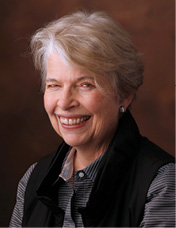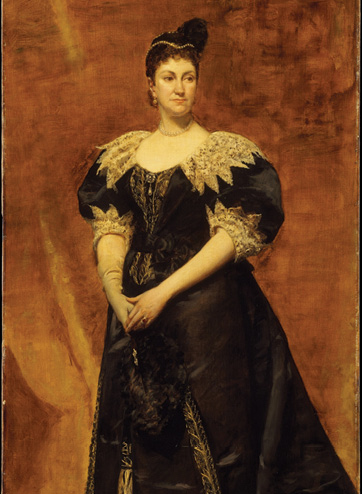
Just in time for the debut of a new television series this year on HBO exploring the Gilded Age, Cecelia Tichi, the Gertrude Conaway Vanderbilt Professor of English, has published her latest book, What Would Mrs. Astor Do? (2018, NYU Press). The work explores the manners and habits of New York socialites during America’s industrial expansion in the late 19th and early 20th centuries.
With assistance from the Jean and Alexander Heard Libraries, Tichi found a treasure trove of century-old etiquette manuals that guided every waking hour for those lucky Four Hundred A-listers who made it into the Astors’ charmed social circle.
The heiress Caroline Schermerhorn Astor was married to William Backhouse Astor Jr. However, it was Ward McAllister, whom Tichi describes as a “pedigreed, pudgy and pompous courtier of sorts,” who helped Caroline become the acknowledged social arbiter for everything from behavior and demeanor to choice of wardrobe and how one’s children were raised. “Just as Queen Victoria ruled Britannia, Mrs. Astor ruled New York and all America by extension,” Tichi says.
She notes that Commodore Cornelius Vanderbilt was a latecomer to Mrs. Astor’s Four Hundred, since he was viewed as an arriviste by many of the old-money families. “Cornelius, his sons and all of their wives eventually found their way onto the list, as they became too wealthy and influential to be excluded,” Tichi says.
While many of the rules for aspiring social climbers seem silly today, Tichi believes there are some lessons that are as relevant as ever.
“I think that today, when everyone is fixed on their screens, we should remember the value that Mrs. Astor’s group placed on social conversation,” Tichi says. “The idea was to be able to speak to anybody of whatever social rank. They understood that conversation, correspondence, even one’s appearance counted for self-respect and ought to be carried forward.”
1. Wear the right clothes.
The guidebook Manners, Culture and Dress of the Best American Society (1891) covered men’s and women’s wardrobes for all kinds of social interactions. For a morning visit, women should wear “a dress with a closely fitting waist.” A smart hostess, meanwhile, would want to dress in “rich material, but subdued in tone … in order that she may not eclipse any of her guests.” Men were similarly required to change clothes often, and always for dinner. But remember: “Never dress above your station.” It leads to “great evils, besides being proof of an utter want of taste.”

2. Know your tableware.
A successful formal dinner party was, according to Emily Post’s Etiquette (1922), “the supreme accomplishment of a hostess.” Table manners were ingrained from an early age for established, old-money members of society. Social newcomers like Cornelius Vanderbilt often revealed their lack of breeding at the table. One etiquette guide specifically points out the bad manners of the nouveau riche by stating that green peas were to be eaten with a fork and not with the aid of a knife, “no matter how dexterously the feat may be performed.” Knowing the difference between forks (fish, entrée and meat) and grasping your wine glass by the stem and not the bowl was also de rigueur.
3. Keep it chivalrous.
During the Gilded Age, women were constricted by having to keep their skirts out of mud while not showing too much ankle. This was no easy feat since getting out of the way of horses (and manure), rubbish and motor cars required the aid of a gentleman to make it onto the curb. A man always respectfully acknowledged every lady of his acquaintance, even when gripping reins and a whip while driving a carriage.
4. Shhhh.
Quiet decorum was the norm in conversations at the dinner table, on the street or in shops—everywhere except at a sporting event or at the circus, where the noise level required speaking loudly enough to be heard. To call attention to oneself in any way was considered gauche. Seating at dinner parties necessitated that attendees mix with old and young to “prompt a ‘social salad’ of bright conversation,” and talking to “inferiors” was always governed by politeness and consideration.
5. Check the mail.
With typewriters only recently invented and telephones reserved for business calls, the morning mail was a highlight of the day. Handwritten correspondence was used for everything from letters to business documents and, especially, invitations. Penmanship was seriously studied from childhood, for, according to Houghton’s American Etiquette (1882), “the culture of a person is plainly indicated by his letters.” So, if that handwritten invitation to Mrs. Astor’s annual ball should arrive, make sure to R.S.V.P. legibly, for your social status may depend on it.
